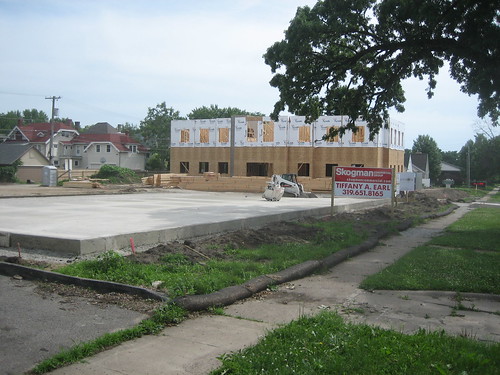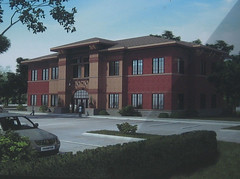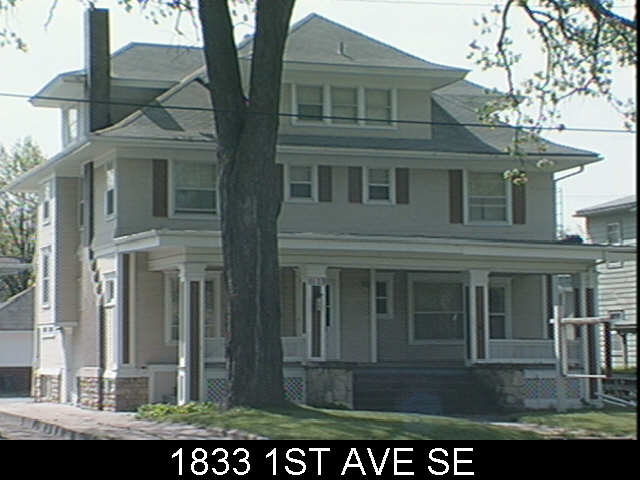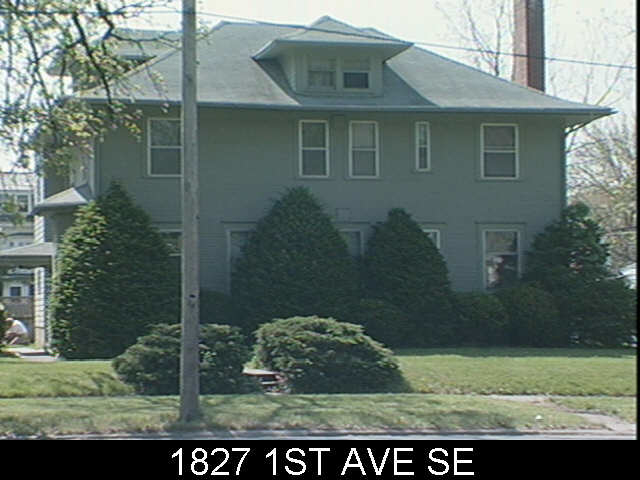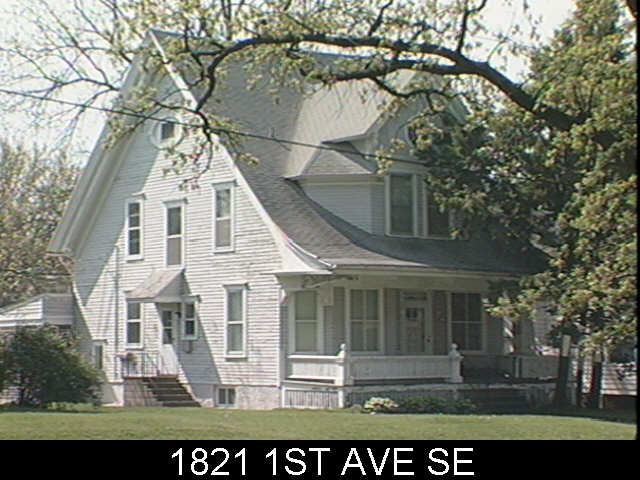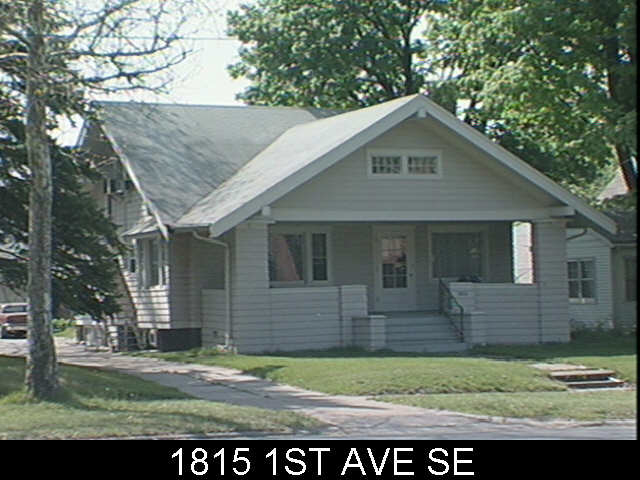As Cedar Rapids hopes to become a more bike friendly community there are several issues that must be addressed. Biking is increasingly being looked at as a legitimate means of transportation for commuting and other trips within a few miles. While there are some city neighborhoods extremely condusive to biking and a few longer distance trails, connectivity gaps still remain for cyclists – sometimes only perceived, but usually a matter of access and safety as well.
Urban Connectivity
Most of the neighborhoods surrounding downtown, especially on the east side (which I am admittedly more familiar with) are excellent for cycling. A cohesive urban street grid diffuses traffic and makes it easy to go from point A to point B more directly. Just like driving, it also provides more options in case a street is closed for roadwork or there is heavier traffic, more obstacles, etc. 2nd and 3rd avenues on the the southeast side provide excellent access in and out of downtown. With only a few traffic lights they each make for a quick and easy “express” ride. Both streets are fairly wide and would have plenty of room for a designated bike lane, but in my opinion, they are not necessary. With three to four travel lanes in each direction and generally low traffic levels, it is safe enough for cyclists to occupy an entire lane and drivers are usually respectful. Unfortunately these avenues terminate at 19th Street. A shifted grid of streets provides several safe and direct connections to the southeast neighborhoods east of Wellington Heights, around Bever Park and Mt. Vernon Road.
However access from this area further north “east” to the mid Northeast quadrant (approximately between 19th Street and 40th Street) is full of gaps. Beyond 19th Street there aren’t really any continuous streets running parallel to 1st Avenue. It is possible to weave through some minor streets north of First Avenue beginning around Coe, past Franklin Middle School, and up to the Kenwood Park neighborhood, but this can be very out of the way, depending on your destination, and passes over a number hills.
The Cedar River Trail that runs from southwest Cedar Rapids, through downtown, and further north along I-380 is the more recommended and suitable bike route from downtown. It is a a quick and safe link from down to the far north end of Cedar Rapids, Hiawatha, and beyond, all the way to Waterloo along the Cedar Valley Nature Trail. Unfortunately the trail has very poor access to most of the neighborhoods it passes by – much of the mid Northeast side – which also suffers from a severe lack of sidewalks. It is not uncommon for people living less than a mile away to drive to the trail instead of just bike or walk there.
In my own experience biking from home near Lindale Ave and 30th Street, to downtown I usually take B Avenue NE for a number of blocks before crossing First Ave, or I cross First Ave sooner and take Forest Drive through the winding streets of southeast to meet up with 2nd / 3rd avenue corridors. Sometimes I just ride along First Avenue on the sidewalk and then typically shift over the 2nd Ave to avoid some stop lights and cross traffic. Except for having to ride on the sidewalk (especially beyond 19th Street where there are no parking lanes) I generally prefer this route because it is quick, feels most direct, and is actually a fairly interesting corridor with a wide range of urbanism in a relatively short distance.
New Bikeway
A designated bikeway along the First Avenue corridor through Cedar Rapids could begin to link these existing gaps and could create new connections to Marion and several periphery neighborhoods. There is currently no safe or efficient route to bike from Marion into Cedar Rapids. A bikeway running between downtown or 19th Street all the way to central Marion would provide a direct link between the two cities and many residential areas in between, especially the mid Northeast neighborhoods such as Kenwood Park. After all the distance is really not that great – only 4.5 – 5 miles downtown CR to downtown Marion – but the current road design does not accommodate bicycles and hardly pedestrians. The shear amount and speed of traffic and narrow outside lanes prohibit riding in the street. A First Avenue bikeway could also be a first step toward making the Lindale Mall and Collins Road area more accessible to modes other than driving.
A bikeway could take many different forms, ranging from a simple bike lane designated by special lane markings, a physically-separate bike lane with some kind of median between it and vehicular traffic lanes, or a completely off-road bike path adjacent to the the street. I do not believe a basic bike lane would provide adequate safety for cyclists and would likely only be used by the most experienced riders. This does no good to encourage more ordinary people to bike as an alternative to driving for commuting to work or running short trips or errands, considering the large residential are so close to Lindale Mall and other retail and dinning destinations.
A physically-separated bike lane would be the “coolest” and treat cyclists as equally legitimate modes of transportation. A physical barrier between bike and car traffic would provide a safe and efficient route for cyclists with the same prestige and importance as cars. This may seem like a trivial quality, but making our bicycle infrastructure more substantial and visible would increase awareness of drivers and improve safety for cyclists. It could also go a long way for the improving the perception of cycling, especially as legitimate transportation mode. Similar to the way rail transit attracts more riders than buses, visible, permanent bicycle infrastructure would most likely attract more riders.
One significant issue with physically-separated bike lanes along First Avenue are the numerous driveways that exit on to the street. Driveways would either need to be consolidated (which isn’t very feasible for most of the stretch) or they would constantly be cutting through the separating median, not to mention the bike lane itself. The third option would be to build an off-road bike path on either side of the street separated by a typical grass median – essentially a wide sidewalk that could accommodate both pedestrians and cyclists. These have been implemented elsewhere in town and make it safer for pedestrians, but does little to encourage cycling or making it more visible.
Some kind of hybrid of these types may work better to provide a safe, accessible, and visible bikeway between downtown Cedar Rapids and Marion. One solution may combine traffic lane adjacency of a standard bike lane with the increased safety of a raised sidewalk. Along several urban roadways in Germany, bikeways share a grade with sidewalks but are strictly demarcated with a painted surface, alternative pavement, and sometimes even physical separation. Unlike a wide sidewalk/bike path combination common in Iowa, these bikeways run right along the street edge and are not separated by a grass median. This maintains the bikeway as a legitimate and visible component of the city’s transportation infrastructure, while providing cyclists their own lane safely separate from vehicles.
Unfortunately this fourth option still does not adequately address the issue of cars entering and exiting driveways along First Avenue either. One definitive benefit of a standard on-street bike lane is that cars exiting drives would be much less likely to block the bikeway when waiting to turn out. Perhaps a more permeable car-bike lane barrier could work – providing cyclists with some comfort of separation and visibility for motorists. Washington DC debuted new bike lanes this week in the median of Pennsylvania Avenue. Reflective metal pylons separate cyclists from motorists where the bike lanes narrow. This could be an appropriate safety net for cyclists while allowing reasonable access in and out of existing driveways.
Thoughts? The bottom line is Cedar Rapids needs to accommodate more transportation alternatives. With a bare bones transit system and poor pedestrian connectivity between different areas of the city and metro, we must invest in specific new infrastructure that will encourage alternatives and improve safety and accessibility for everyone.
